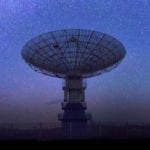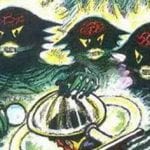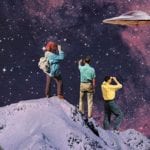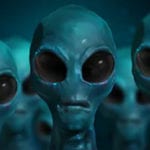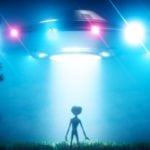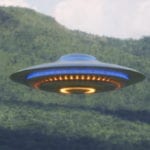 Creepy
Creepy  Creepy
Creepy  Technology
Technology 10 Scientific Breakthroughs of 2025 That’ll Change Everything
 Our World
Our World 10 Ways Icelandic Culture Makes Other Countries Look Boring
 Misconceptions
Misconceptions 10 Common Misconceptions About the Victorian Era
 Mysteries
Mysteries 10 Strange Unexplained Mysteries of 2025
 Miscellaneous
Miscellaneous 10 of History’s Most Bell-Ringing Finishing Moves
 History
History 10 Great Escapes That Ended Right Back in Captivity
 Weird Stuff
Weird Stuff 10 Fascinating Things You Might Not Know About Spiders
 Food
Food 10 Everyday Foods You Didn’t Know Were Invented by the U.S. Military
 History
History 10 Odd Things Colonial Americans Kept at Home
 Creepy
Creepy 10 More Representations of Death from Myth, Legend, and Folktale
 Technology
Technology 10 Scientific Breakthroughs of 2025 That’ll Change Everything
 Our World
Our World 10 Ways Icelandic Culture Makes Other Countries Look Boring
Who's Behind Listverse?

Jamie Frater
Head Editor
Jamie founded Listverse due to an insatiable desire to share fascinating, obscure, and bizarre facts. He has been a guest speaker on numerous national radio and television stations and is a five time published author.
More About Us Misconceptions
Misconceptions 10 Common Misconceptions About the Victorian Era
 Mysteries
Mysteries 10 Strange Unexplained Mysteries of 2025
 Miscellaneous
Miscellaneous 10 of History’s Most Bell-Ringing Finishing Moves
 History
History 10 Great Escapes That Ended Right Back in Captivity
 Weird Stuff
Weird Stuff 10 Fascinating Things You Might Not Know About Spiders
 Food
Food 10 Everyday Foods You Didn’t Know Were Invented by the U.S. Military
 History
History 10 Odd Things Colonial Americans Kept at Home
10 Books with Alien Aliens
The question “are we alone in the universe?” has rung across countless centuries and cultures. Works of fiction and speculation attempt to address this, but a lack of imagination or budget often restricts alien creatures to appearing as merely slightly modified humans. Even the majority of Earth life, which is in the sea, is much more alien than these. Of all the animals on Earth, our humanoid form takes up an infinitesimal room in the grand list of body types, so even an alien evolving on an Earth-like planet is unlikely to look like us. Here we cover ten works of fiction which begin to properly explore the real possibilities of alien form. There are many other equally wonderful books that can be read; feel free to suggest any in the comments below. And be warned: there are spoilers in this list.
“Nowhere in space will we rest our eyes upon the familiar shapes of trees and plants, or any of the animals that share our works. Whatsoever life we will meet will be as strange and alien as the nightmare creatures of the ocean abyss, or of the insect empire whose horrors are normally hidden from us by their microscopic scale.” – Arthur C. Clarke
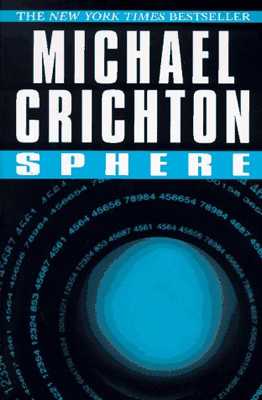
Sphere is a psychological thriller concerning a large alien sphere found in a spaceship detected at the bottom of the sea. The few characters must cope with increasingly unusual circumstances as the capabilities of the sphere become apparent: it bestows psychic powers able to reshape reality itself. Although no aliens appear directly in this novel, Crichton does have the protagonists encounter alien technology and they muse over how unrealistic the casual human idea of an alien must be. Aliens composed of gases, aliens who communicate using odors, and aliens on another plane of existence entirely are thoroughly discussed in this thought-provoking piece. The ‘apes or angels’ hypothesis is encapsulated well in a discussion of how perhaps the sphere was intended by aliens as a test for humanity. One character replies that an insect might find itself caught between gears in a human machine and muse that the machine was intended as a test of its intelligence, when in reality the levels of intellect are so different that the insect was never even considered when the machine was made. Likewise, any aliens we ever encounter are unlikely to be at a technological or mental level similar to our own. They will be primitive animals, ‘apes,’ or so advanced that they will effectively be ‘angels.’
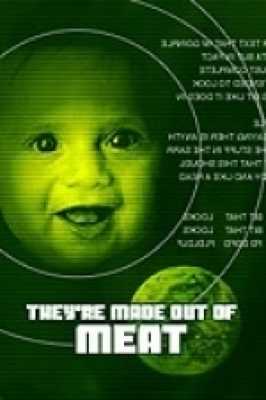
The team of explorers in this comical short story are not directly described, except it is implied that they are plasma-based, as is the norm for galactic life. They are both amused and baffled to discover that on one planet, Earth, life is made of meat. To them, the notion of thinking, talking meat is beyond the ridiculous. In the end they decide to simply ignore the weird abominations and pretend the galaxy is empty, safe in the knowledge that creatures made of meat could never travel beyond their own solar system and discover the truth. This wonderful story provides a strong glimpse into the eyes (or equivalent receptive organs) of aliens aghast at how disgusting and unusual humans appear to be, whilst comically giving a reason as to why no aliens have ever contacted us.
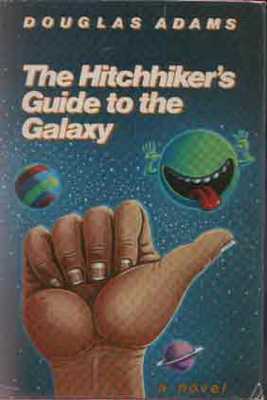
This trilogy of humorous and whimsical books details the travels of Arthur Dent, a fairly ordinary human from Earth who is whisked away into the wider ridiculous galaxy. Many of the huge variety of aliens in this series are given amusing explanations, such as the jatravartids who have fifty arms and therefore developed under-arm deodorant before the wheel. Although most aliens in this entertaining series could be viewed as basically human with only a few changes made, there are several that really stand out as bizarre. The hooloovoo is a super-intelligent shade of blue which can exist in two dimensions and be manipulated by light refraction. There are also the fallen albino marsh worms, who consume hallucinogenic gases from their marshy habitats. Upon death, their stiffened bodies can be smoked like cigarettes, invoking feelings first of exquisite bliss, then admirable curiosity, and finally mild hunger (although only as your brain explodes). Lastly, the infamous babel fish consumes unconscious brainwave frequencies and excretes them again in a form understandable to the speech centers of the brain. When stuck in the ear, they serve as a universal translator, and are at one point used to disprove god, who obligingly ceases to exist.
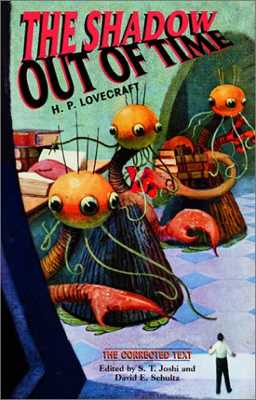
Lovecraft is famous for his peculiar and horrific depictions of non-human life. In this work of his, he describes the Yith, an alien race capable of switching minds with other lifeforms in different parts of time and space. Using this capability, they have amassed a great library of knowledge, and are able to avoid the destruction of their species at least once by mentally transferring their entire populace into the unsuspecting bodies of other beings, whose own minds are likewise swapped into the Yithian bodies only to die shortly afterwards. The bodies of the Yith, therefore, are not their original bodies, but are nevertheless wonderfully alien. They are cone-shaped, tapering to a narrow neck at the top supporting a head encircled by eyes allowing vision in all directions and several types of tentacles which they use to manipulate objects. The ultimate fate of the Yith is never revealed, for they are always able to safely project themselves through time and space whenever their species is threatened with extinction.

This philosophic piece explores how the fundamental differences in consciousness between humans and aliens would prevent meaningful communication. Space explorers come to a planet that is covered with a single enormous creature resembling a planet-wide ocean. They attempt to communicate with it or even just understand it but are met with constant disappointment. The titular ocean creature itself seems to be curious about the humans, but perhaps thinks and reasons in a more psychic way. It probes the human consciousness, finding weak points in the form of repressed and distressing memories, and replicates these in an attempt to observe or perhaps test the reaction of the humans. The main character, Kevin, finds his dead wife suddenly recreated and is deeply unsettled when he realizes that this phenomena is the work of Solaris. Other characters are visited by their own troubled pasts and ghosts, and the humans gradually begin to realize that their own minds are flawed and not at all understood, making understanding a truly alien mind impossible. The entire expedition results in a distressing and utter failure.
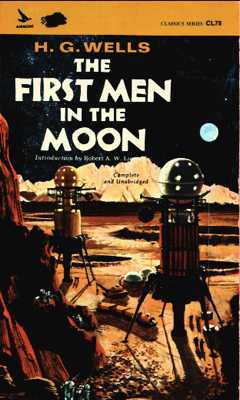
Wells details here the journey of an eccentric scientist and his more level-headed companion as they travel to the moon in a bathysphere made of gravity-repelling material. At first the moon is barren and white, but when dawn comes, a number of marvelous and gigantic plants rapidly sprout and grow. The white surface is revealed to be frozen oxygen, which sublimes under sunlight to become thin breathable air. The plants quickly spread their spores before they wither and die when nightfall comes, two weeks after sunrise. The moon is not solid but is run through completely with tunnels and caverns like a sponge. The interior is inhabited by selenites, strange arthropods in a hive-like society. Selenites, like colony insects, have specific functions, and their body shapes vary vastly to this end. Some have amazing memories and exist as information repositories, replacing the need for books. Others are modified to act as farmers, oarsmen, and even musical instruments. So varied are their forms that the characters in the story have difficulty believing that they are all the same type of creature. Some are only a few centimeters tall, but the greatest in size and intellect is the Grand Lunar. The Grand Lunar is the center of the hive, a vast and ancient being who is the greatest and only independent mind in the moon.
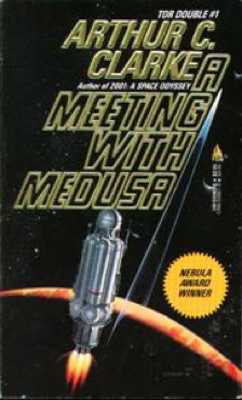
The aliens in this story live in the clouds of Jupiter. A visit to the planet in a newly-developed spaceship reveals the presence of an entire ecosystem. Tiny glowing plankton are buoyant enough to float and are dispersed throughout the air. These are grazed upon by the titanic medusa. The medusa are over a mile long and are gigantic whale-blimps, composed of sparse matter and floating about through the atmosphere. Much smaller, the aerial sharks with their broad fins are only 100m long but hunt the medusa. This was one of the earlier attempts at describing a complete alien bionetwork in an environment fundamentally different to our own, and subsequent works grew increasingly bizarre.
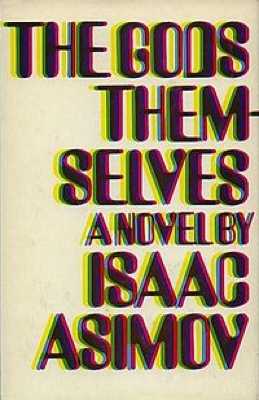
In a parallel universe where the fundamental laws of physics are different to our own, lives a strange species. There are three genders here, each different enough from the others to be considered at a glance to be a separate species in its own right. Tentatively described as being somewhat gelatinous, with at least one alien able to spread her sparse atoms enough to pass through solid rock, these creatures are a far cry from humanity. Their very thought is based on a melding of logic and intuition very unlike our own. They are nurtured and taught by greater beings who uniquely have distinct heads, and who create machines and tools deep underground for unknown and possibly dark purposes. In the end, it is revealed that when the three genders mate for the final time, they combine, solidify, and metamorphose into these larger beings, their ultimate adult form.
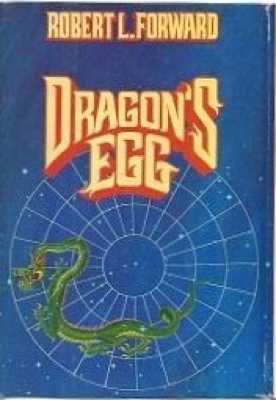
The cheela are described as being as intelligent as humans and made up of about the same number of particles, but they are much more dense and therefore smaller due to the stronger gravitational field on their home. Each cheela is a flattened disk only 5mm across and 0.5mm high. More amazingly, their atoms are not bonded as ours are, but instead form a sea of electrons like pure metals do, and neutrons are exchanged almost as freely as electrons. As nuclear reactions occur more rapidly than electron exchanges, the cheela live about a million times faster than humans. The cheela live on the surface of a neutron star, whose intense gravity is what necessitates their bizarre chemistry and shape. Due to their rapid lives, humans are able to observe the cheela develop agriculture and an entire space-faring civilization over only a few days. The cheela come face-to-face with humans but shortly leave them far behind, not wanting to interfere with the development of what has quickly become to them a species with far inferior technology.
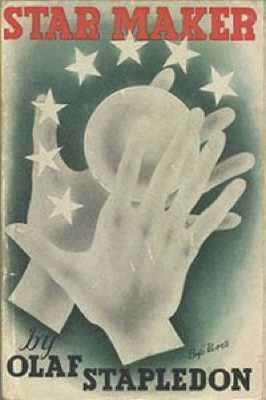
Stapledon shows his supremely fertile imagination in this magnificent work of his, a history and future of the entire galaxy, cosmos, and the star maker itself – god. He describes a flock of small birds which has a group mind made up of the organic radio signals between individual birds in the flock. As birds die and are born, the mind itself is constant and immortal and becomes vastly wise. In another place and time, there are plants whose planet’s atmosphere has begun to leech into space and who evolve the means to move and eventually think in order to prevent their own extinction. Further, on one planet vast creatures resembling ships develop with a bizarre culture and caste system dependent heavily on left and right. In one oceanic planet, arachnoids and fish form a symbiosis that results in the fish developing a cavity within their own brain in which the arachnoid lives, and together these combined species colonize the galaxy. The nebulae and stars themselves are revealed to be extraordinarily slow-living creatures who are eventually swept into a cosmic consciousness. If you want hundreds of beautifully explained and truly alien creatures, Star Maker is a must.

